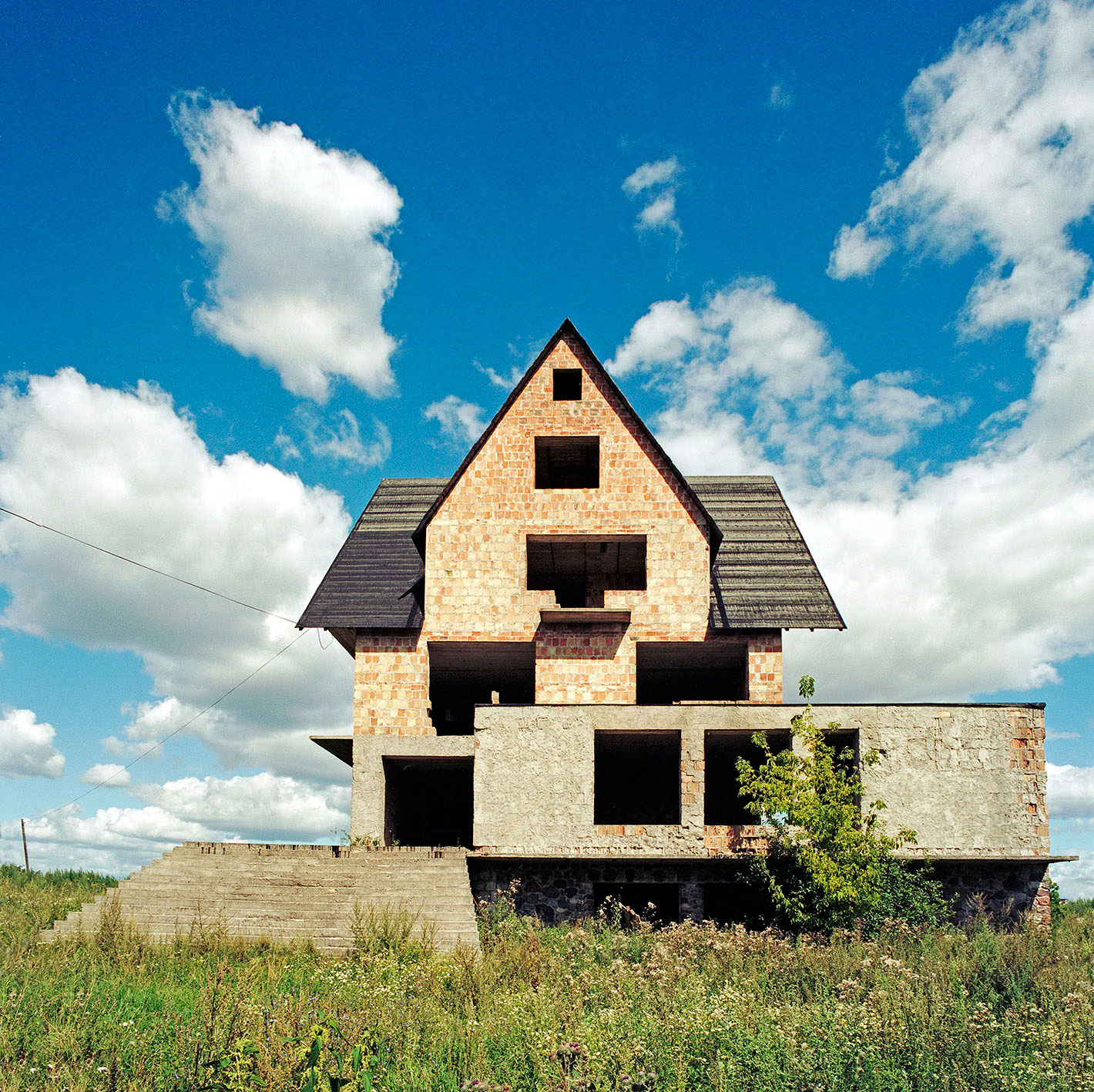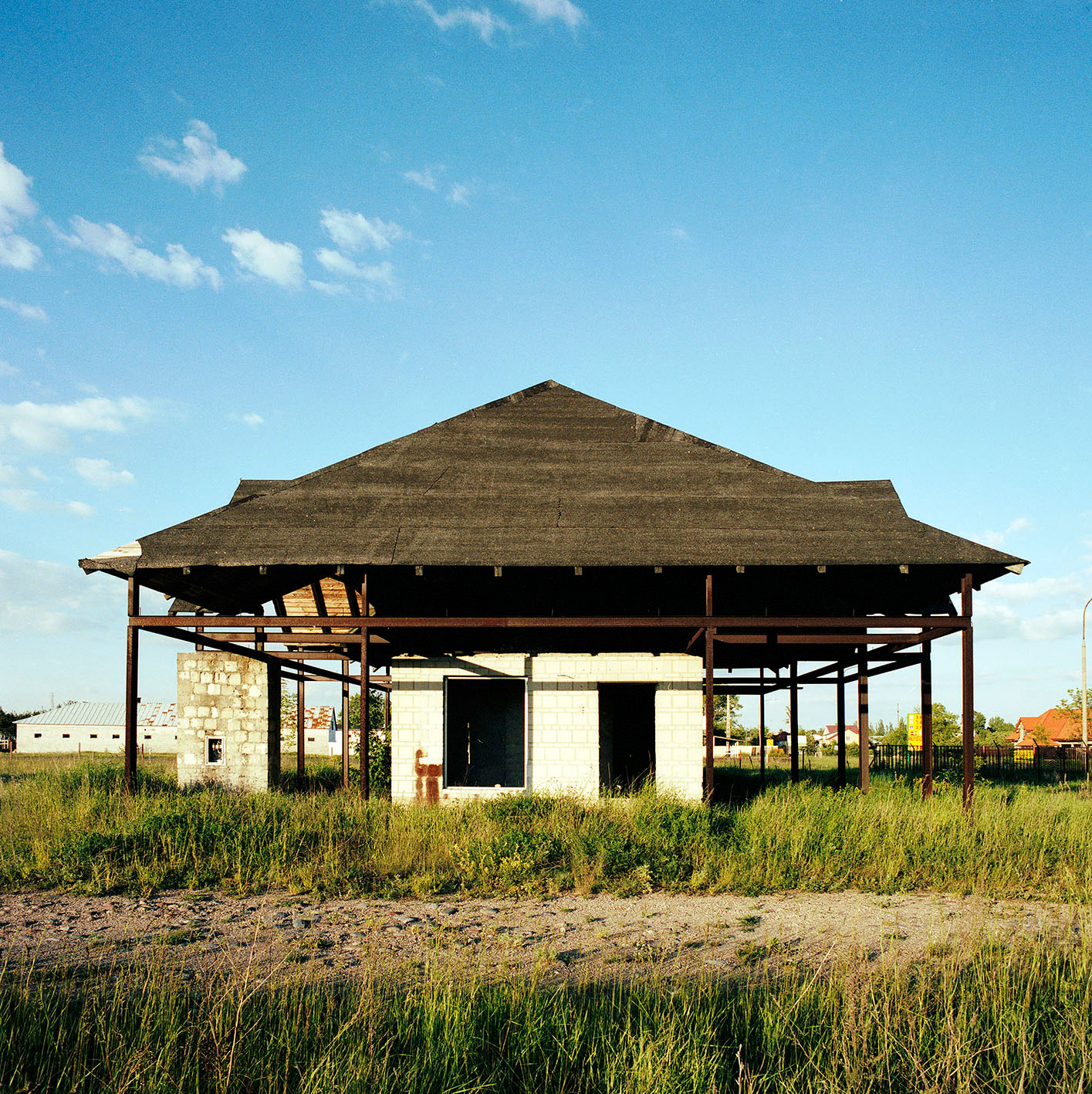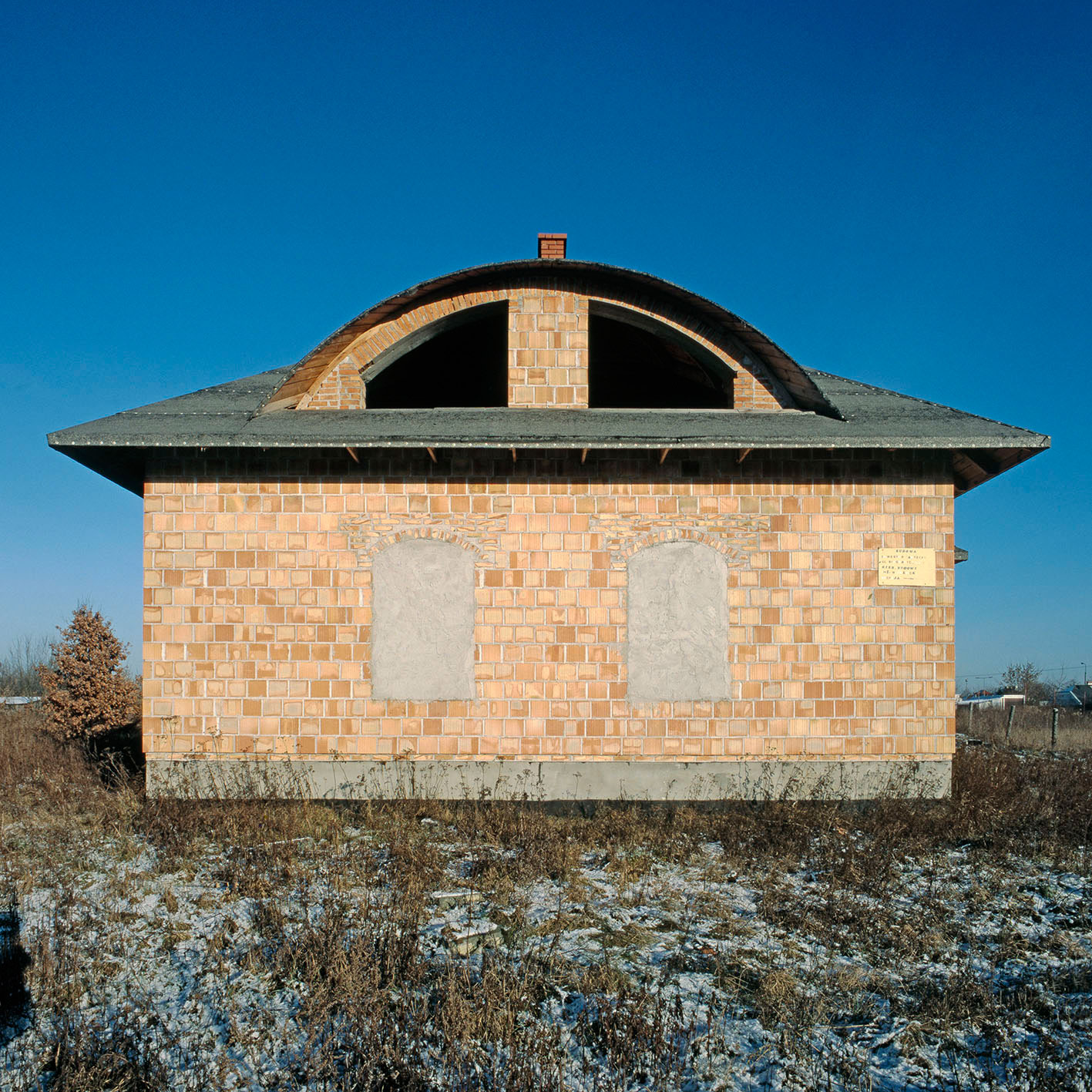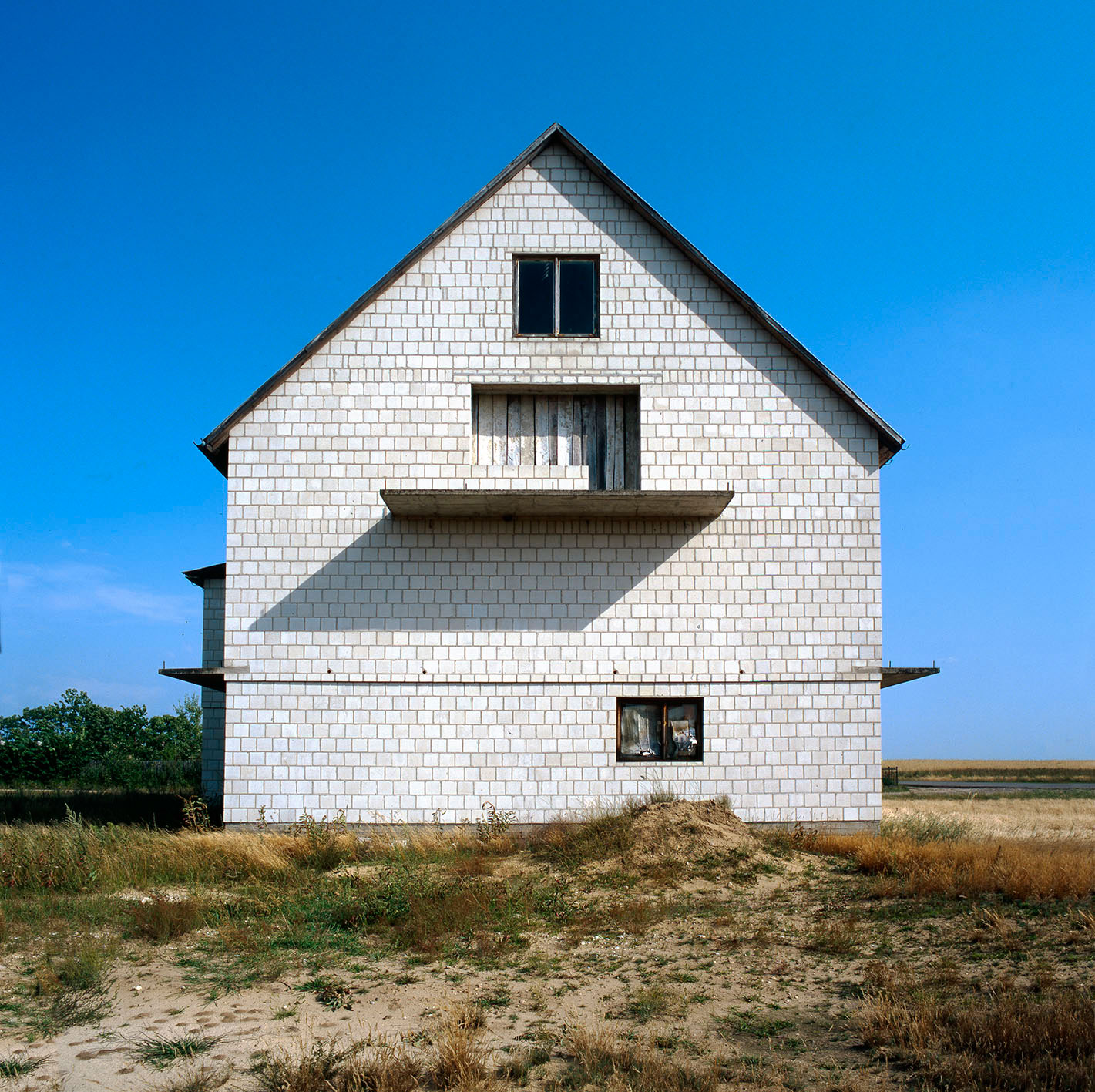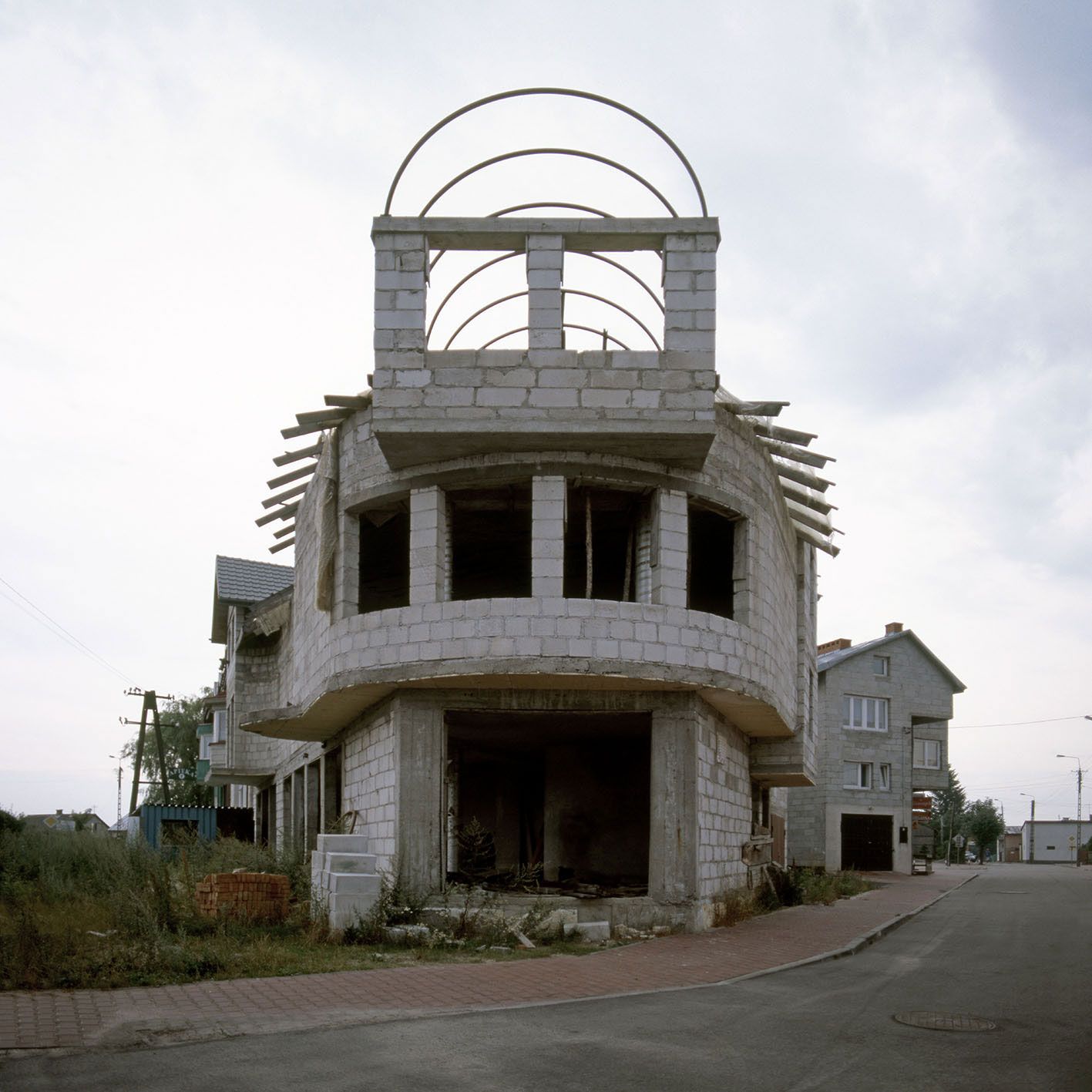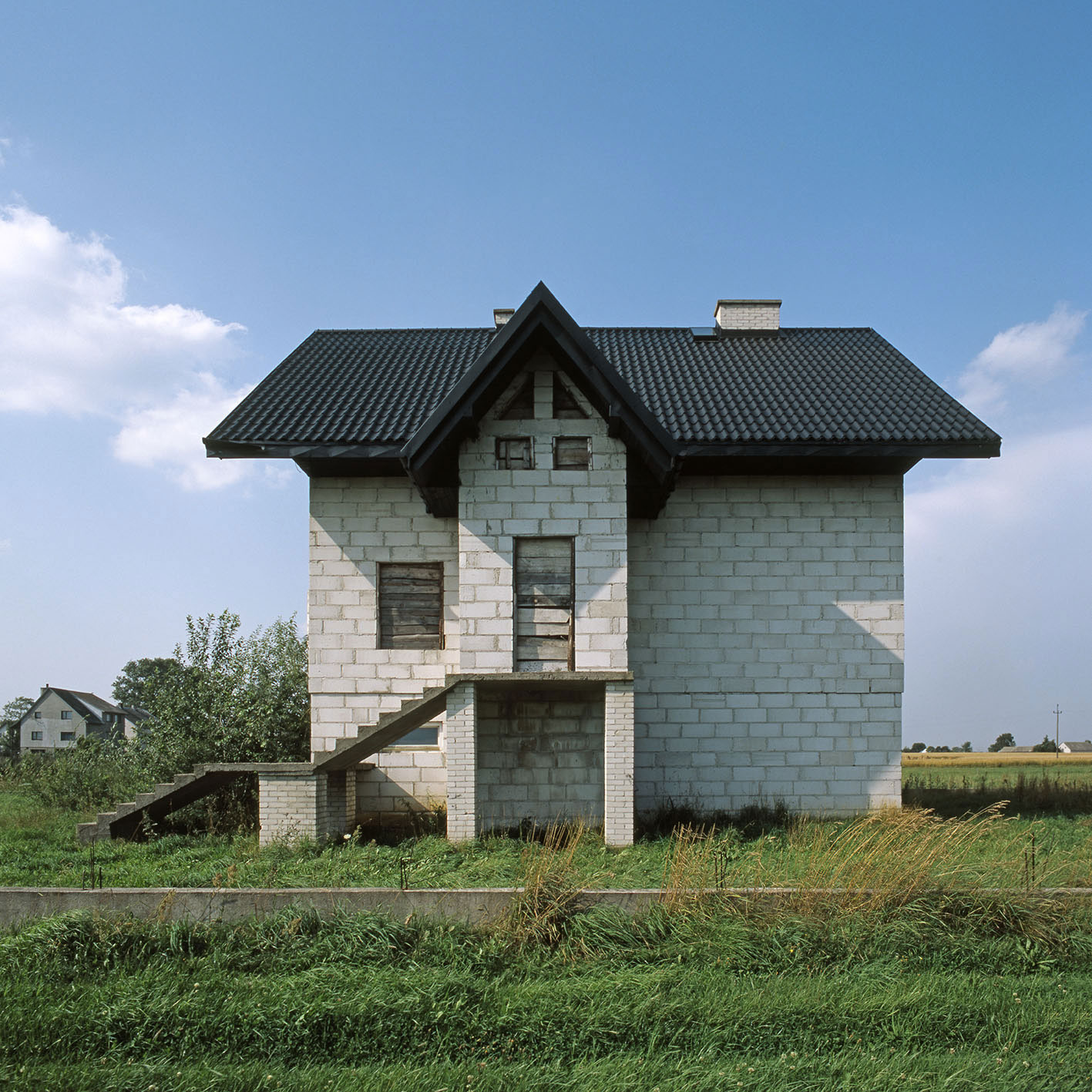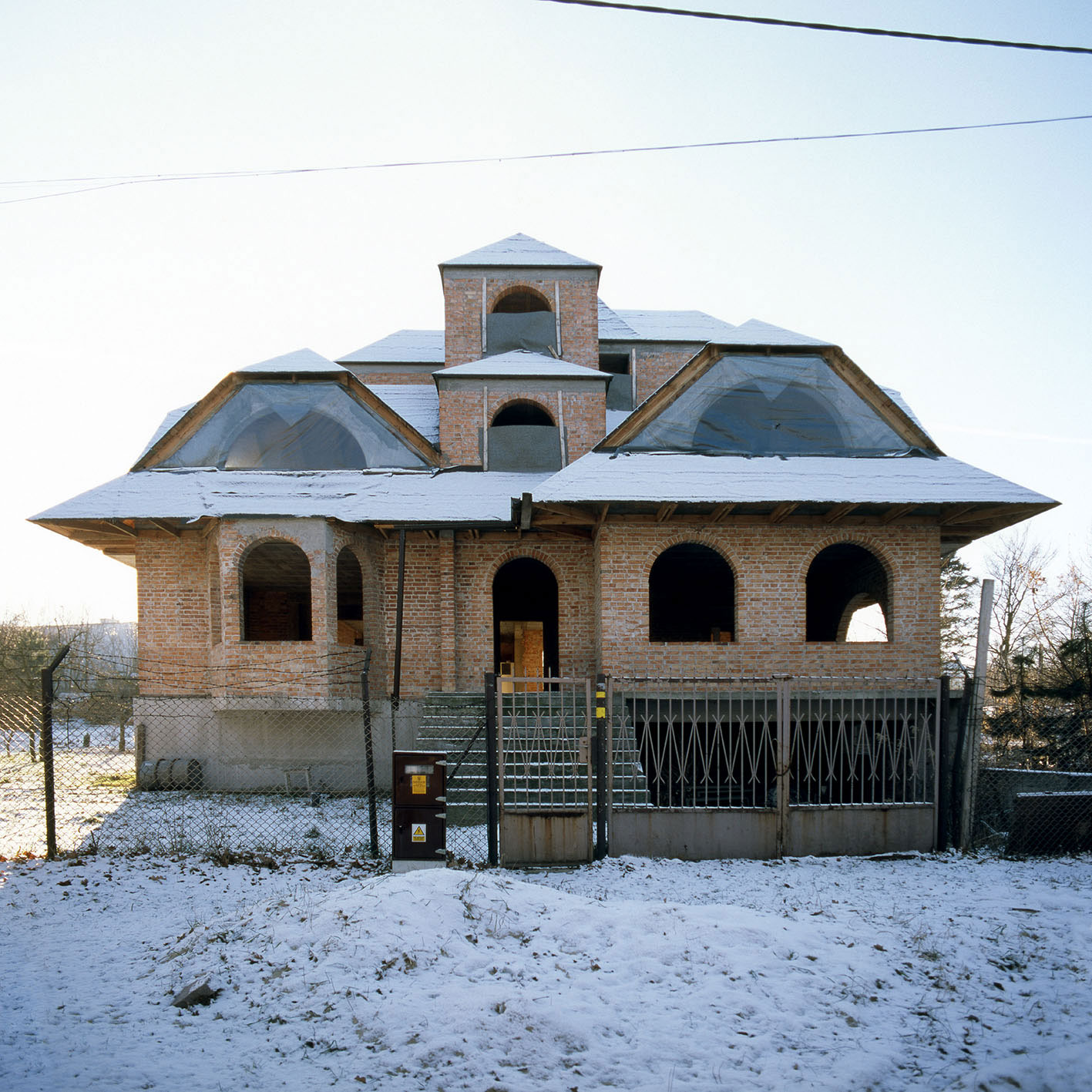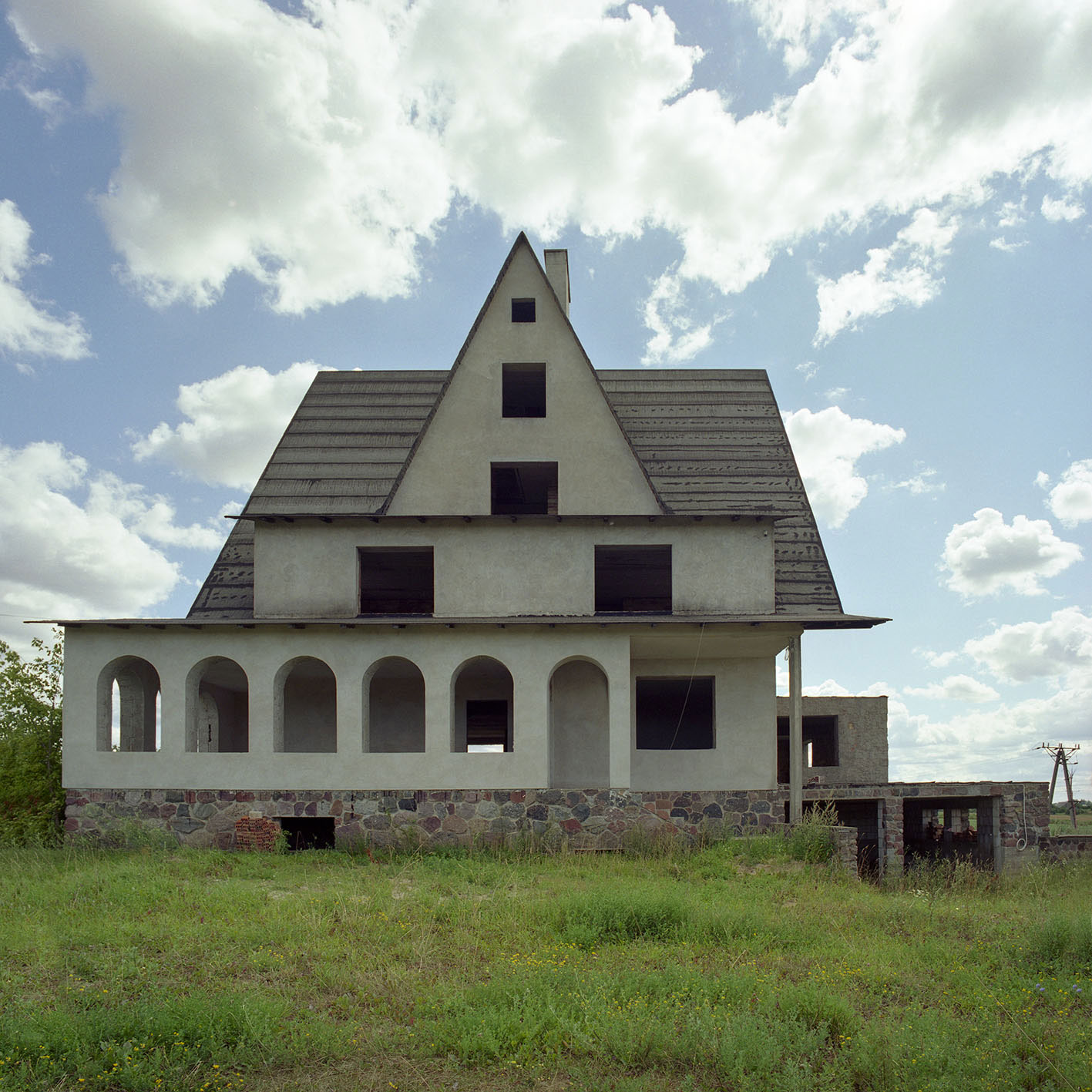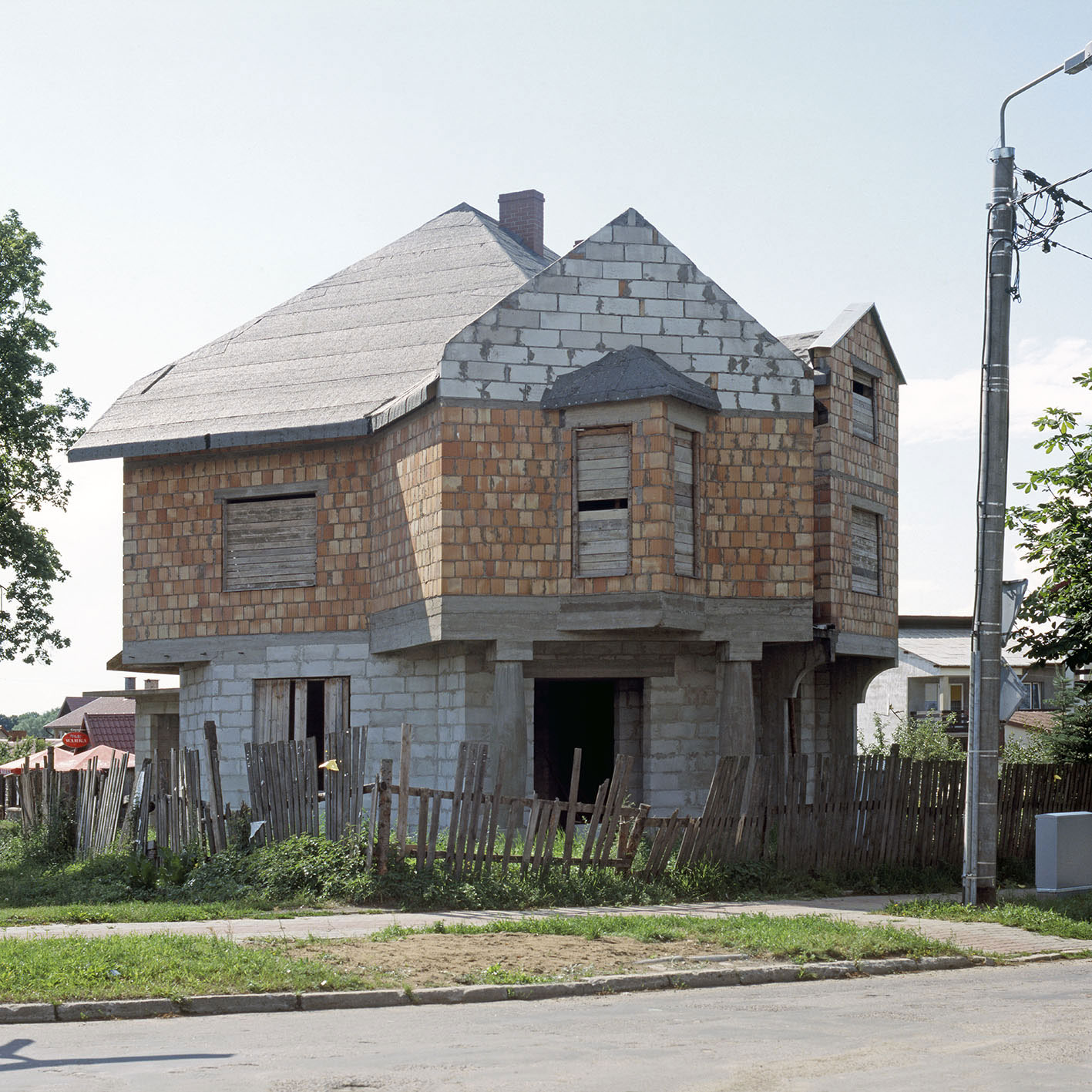Unfinished business: what individual tragedies reside in Poland’s half-built houses?
“Poland is littered with unfinished houses. Each of these houses stands for a tragedy but also an aesthetic experience.” This is how Swiss photographer Nicolas Grospierre describes his recent project Not Economically Viable. Since 2003, when he began to take note of the preponderance of empty, half-built buildings lining the rural roads of the country where he now lives and works, Grospierre has been adding to this catalogue of disrepair. “These buildings could be noticed from a distance because of the lack of window panes,” he says. “[This] transforms the windows into dark gaping holes.”
Living in Warsaw, and having spent 15 years travelling in the former communist states of the New East, Grospierre has learned to appreciate the ways in which ideology and architecture interact. In mass housing projects, for instance, or monuments to sports and culture, he sees the “embodiment” of ideology. Conversely, this is what makes Not Economically Viable unique: in his words, “these are buildings that are absolutely void of ideology; they are all pragmatism, and this pragmatism is what leads to their being unfinished.”
There are personal histories locked up in these little ruins, they might tell us about the public history we are making for ourselves
These unfinished and unoccupied houses were largely instigated in the post-communist period — they can perhaps be read as symbols of the optimism and expanded possibilities of Polish citizens, free to strike out on their own. As Grospierre notes, we will never know what circumstances led to their abandonment: bankruptcy, divorce, death, what he calls “sad human stories”.
“What I found intriguing about these houses is that they are, quite frankly, rather ugly. And yet, they are somehow beautiful, because they reflect an anonymous tragedy, [something] very real for the person who had to throw away his plans of building his own house. This definitely lends a certain nobility to the building: the remnant of an ambition never realised, and a testimony to its failure.”
It’s the small scale of these buildings that makes them so involving. As Grospierre says, “if these were great architectural works, there would be a kind of grandiose and magnificent touch, as when we witness ancient or medieval ruins. These are all cases of aborted histories, where the only event inscribed in the walls is that of the original failure.” The modest architectural pretensions of these houses are not to be scoffed at — in Poland as throughout Europe we see evidence that an influx of money and big-name designers do not always add up to attractive or socially useful buildings. Better instead to reflect on the personal histories locked up in these little ruins, and what they might tell us about the public history we are making for ourselves.
Text: Samuel Goff
Image: Nicolas Grospierre
